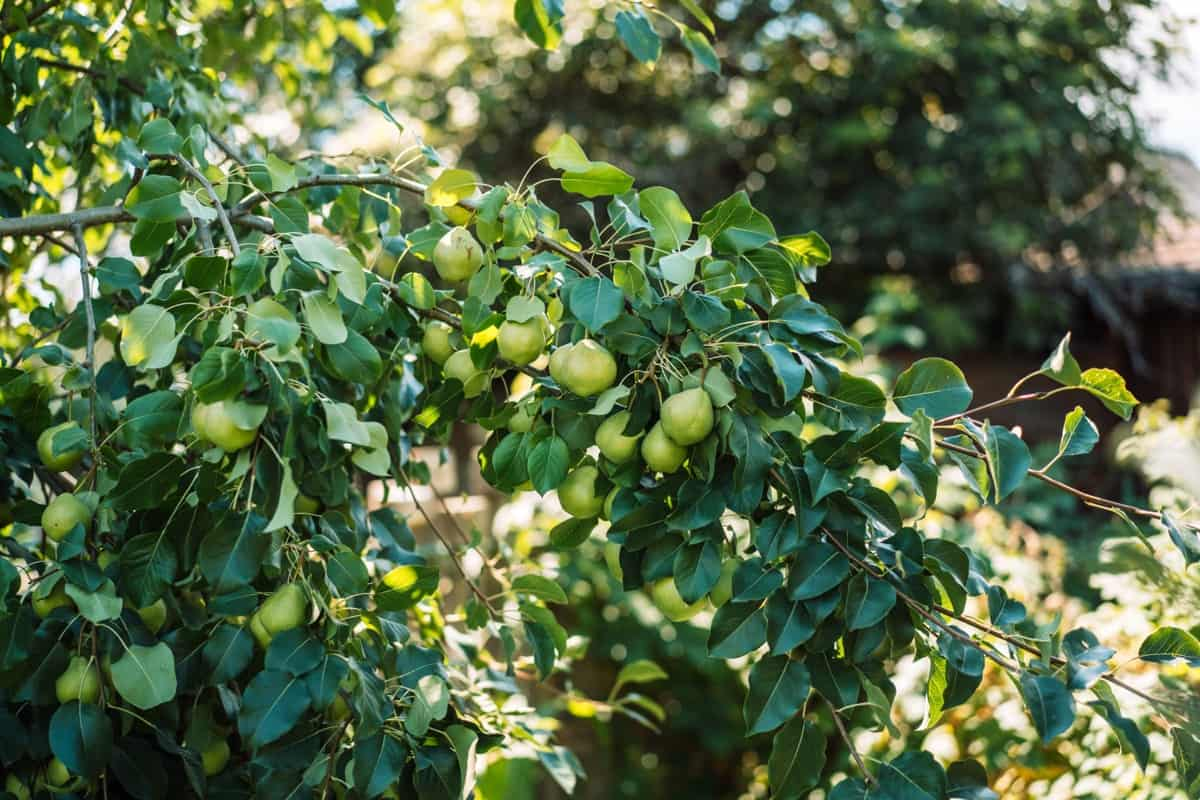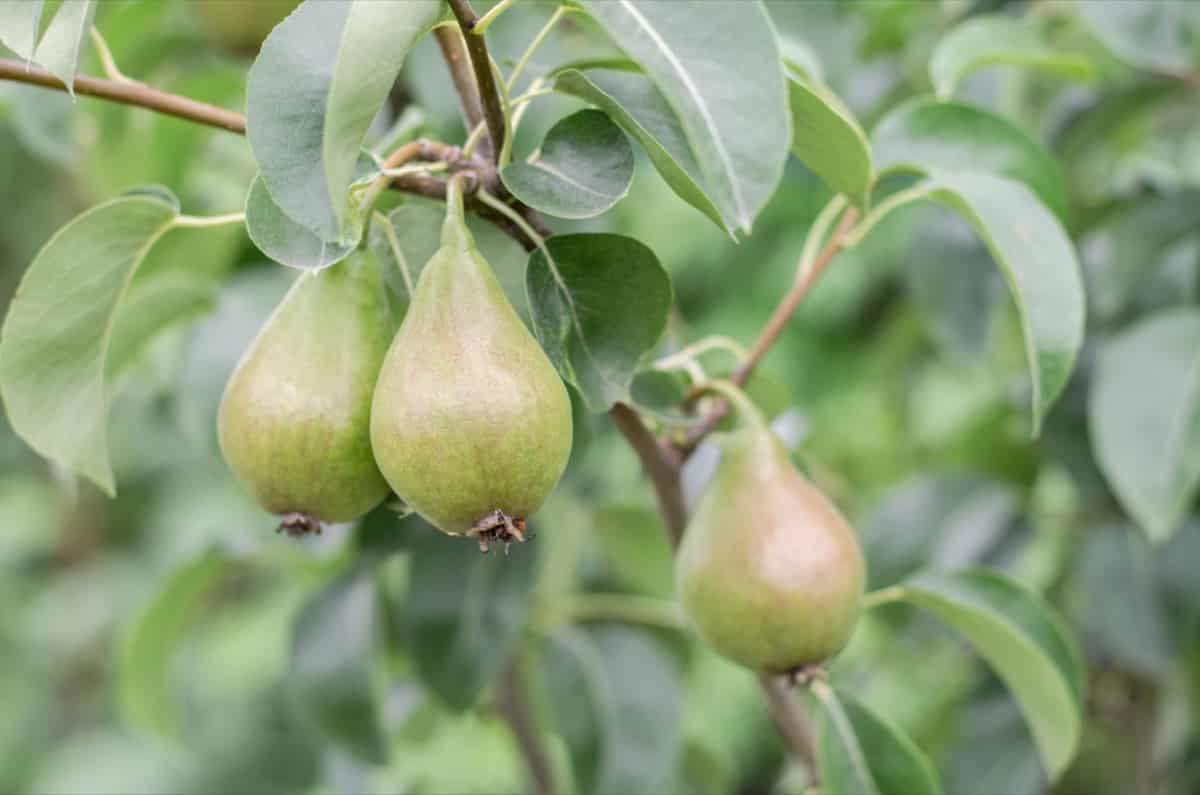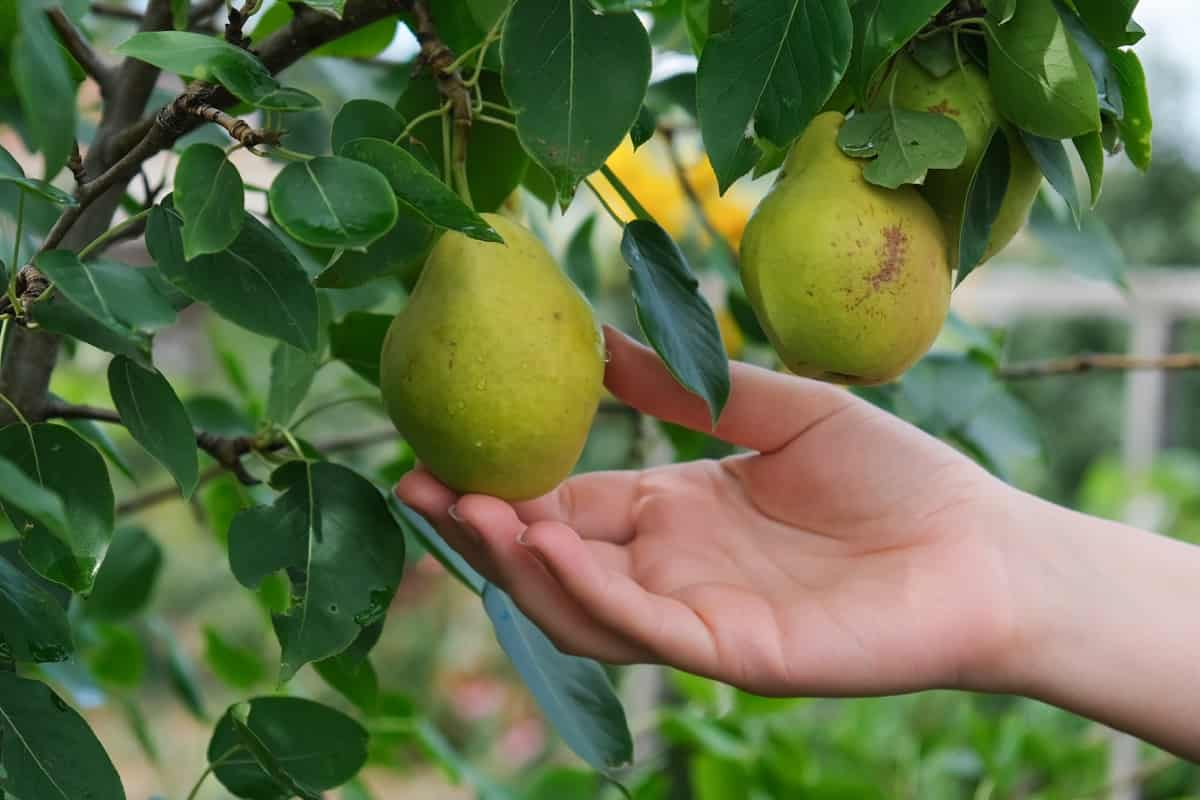Brown spots on pear tree leaves can be common for gardeners and orchard owners. Various factors, including fungal infections, nutrient deficiencies, and pest infestations, can cause these spots. This article will explore the causes of brown spots on pear tree leaves and give an idea about how to treat brown spots on pear tree leaves naturally.

How to Treat Brown Spots on Pear Tree Leaves
Identifying the Causes of Brown Spots on Pear Tree Leaves
Brown spots on pear tree leaves can be indicative of various underlying causes. These spots can negatively impact the health and productivity of the tree if left unaddressed. Identifying the specific causes of these brown spots is crucial to implementing the appropriate prevention and treatment measures. Various factors, including fungal and bacterial infections, pest infestations, nutritional deficiencies, and environmental factors, can cause brown spots on pear tree leaves.
Fungal Infection on Pear Tree Leaves
Some common fungal infections that cause brown spots on pear tree leaves include pear scab, rust, and leaf spot diseases. To identify a fungal infection, look for brown spots with yellow or dark borders. Treatment and management of fungal infections on pear tree leaves include
- Remove infected leaves and branches during pruning to reduce the spread of fungal pathogens.
- Apply fungicides specifically formulated to target fungal infections on pear trees.
- Implement good cultural practices, such as adequate tree spacing, proper irrigation, and regular fertilization.
- Consider planting disease-resistant pear tree varieties less susceptible to fungal infections.
Nutrient Deficiency Causing Brown Spots on Pear Tree Leaves
Nutrient deficiencies, specifically lack of essential minerals like potassium, calcium, and magnesium, can lead to brown spots on pear tree leaves. To rectify the nutrient deficiencies,
- Conduct a soil test to know which nutrient deficiencies are present in the soil.
- Apply a balanced fertilizer that contains nitrogen, phosphorus, and potassium. Use a slow-release fertilizer to give a steady supply of nutrients over time.
- Apply a foliar spray containing the deficient nutrient to rectify the deficiency quickly. This method allows for direct absorption of nutrients through the leaves.
- Incorporate organic matter into the soil with compost or well-rotted manure. Organic matter improves soil structure and nutrient availability.
Pest Infestation Causing Brown Spots on Pear Tree Leaves
Certain pests, such as mites, aphids, and pear psyllids, can infest pear trees and cause brown spots on the leaves. These pests feed on the tree’s sap, causing damage and discoloration of the leaves. To control pest infestations in Pear trees,
- Encourage natural predators like ladybugs and lacewings in your garden. These beneficial insects feed on pests like mites and psyllids, reducing their populations naturally.
- Applying horticultural oils can help control pest infestations. These oils suffocate the pests by coating their bodies, effectively eliminating them.
- Healthy trees are better equipped to resist pest infestations and recover from damage. Water the tree adequately, provide sufficient sunlight, and fertilize as needed.
Organic Home Remedies for Treating Brown Spots on Pear Tree Leaves
Neem Oil Spray: Mix one tablespoon of neem oil with 4 liters of water to create a neem oil spray. Spray this solution onto the affected leaves, covering both the upper and lower surfaces. Repeat this process every two weeks until the brown spots disappear.
Baking Soda Solution: Prepare a solution by mixing one tablespoon of baking soda with 4 liters of water and add a few drops of liquid soap. Spray this solution onto the pear tree leaves, focusing on the areas with brown spots.
Milk Spray: Milk contains natural antifungal properties that help control brown spots on pear tree leaves. Mix equal parts milk and water and add a few drops of liquid soap. Spray this solution onto the affected leaves, ensuring thorough coverage.
Compost Tea: To create compost tea, fill a bucket with compost and add water. Let it steep for a few days, stirring occasionally. Strain the mixture and dilute it with water until it reaches the color of weak tea. Use a sprayer to apply the compost tea to the leaves, focusing on the affected areas.
In case you missed it: How to Grow and Care for Prickly Pear: Cactus Planting Instructions

Preventing Brown Spots on Pear Tree Leaves Naturally
- Proper Pruning: Regularly prune your pear tree to improve airflow and sunlight penetration, reducing the chances of fungal infections.
- Watering Practices: Water the tree at the base, avoiding overhead watering, creating a moist environment for fungal growth.
- Mulching: Apply an organic mulch layer around the tree’s base to retain moisture, regulate soil temperature, and prevent weed growth.
- Regular Inspection: Regularly inspect your pear tree for signs of pests or diseases. Early detection can help prevent brown spots from spreading.
Organic Fertilizers for Improving Pear Tree Leaf Health
Using organic fertilizers is a sustainable and effective way to improve the leaf health of pear trees. Their nutrient-rich composition, slow-release nature, and soil-enhancing properties make them an ideal choice for promoting vigorous and vibrant leaves. Compost, manure, fish emulsion, and bone meal are all excellent options to provide the necessary nutrients for healthy leaf growth.
Natural Fungicides for Controlling Fungal Infections on Pear Tree Leaves
Chamomile Tea: It has been used for its medicinal properties for centuries, including its antifungal effects. Brewed chamomile tea can be sprayed onto pear tree leaves to control fungal infections. It works by disrupting the fungal cell membrane and inhibiting its growth.
Copper-based Fungicides: Copper-based fungicides, such as copper sulfate or copper hydroxide, have been used for many years to control fungal diseases in agriculture. They are particularly effective against fungal infections like apple scab and pear rust. Copper-based fungicides damage the fungus’s cell wall, preventing its growth and spread.
Garlic Extract: Garlic extract is a natural fungicide that can help control fungal infections on pear tree leaves. Garlic contains sulfur compounds that have antifungal properties. To make a garlic extract fungicide, crush several cloves and soak them in water overnight. Strain the mixture and dilute it with water before applying it to the affected leaves.
Beneficial Insects for Pest Control on Pear Trees
Pear trees are susceptible to various pests that can damage their health and productivity. While chemical pesticides are commonly used to control these pests, they can negatively affect the environment and human health. An alternative and environmentally friendly approach is to utilize beneficial insects for pest control. Utilizing beneficial insects for pest control on pear trees offers a sustainable and environmentally friendly approach. Ladybugs, lacewings, hoverflies, parasitic wasps, and predatory mites are effective allies in the battle against pests.
Organic Gardening Practices for Preventing Brown Spots on Pear Tree Leaves
- Properly space pear trees to allow for good airflow between them. Prune the branches to create an open canopy, facilitating air movement through the tree.
- Use organic fertilizers that are rich in nutrients to promote tree health. Apply a balanced fertilizer, such as compost or well-rotted manure.
- Regularly prune your pear trees to remove dead, damaged, or diseased branches.
- Implement organic pest control methods like Encouraging beneficial insects like lacewings and ladybugs, which feed on pests like aphids and mites.
- Use organic insecticidal soaps or neem oil as a natural and safe solution to control pests if necessary.
In case you missed it: 9 Causes of Dying Pear Trees and How to Fix Them?

Conclusion
By understanding the causes and utilizing these effective organic home remedies, you can naturally treat and prevent brown spots on pear tree leaves. Regular monitoring, proper care, and maintaining a healthy growing environment will contribute to your pear tree’s overall health and vitality.
- Feed Your Flock for Less: Top 10 Tips to Save on Chicken Feed
- Ultimate Guide to Ossabaw Island Hog: Breeding, Raising, Diet, and Care
- Hatching Answers: The Top 10 Reasons Your Chickens Aren’t Laying Eggs
- Eggs and Economics: Breaking Down the Cost of Raising Backyard Chickens
- Defend Your Greens: Proven Methods to Keep Iguanas Out of Your Garden
- Ultimate Guide to Cinnamon Queen Chicken: A Comprehensive Guide for Beginners
- Ultimate Guide to California Tan Chicken: Breeding, Raising, Diet, Egg-Production and Care
- Ultimate Guide to Marsh Daisy Chicken: Breeding, Raising, Diet, and Care
- 10 Types of Chicken Farming Businesses You Can Start for Profits